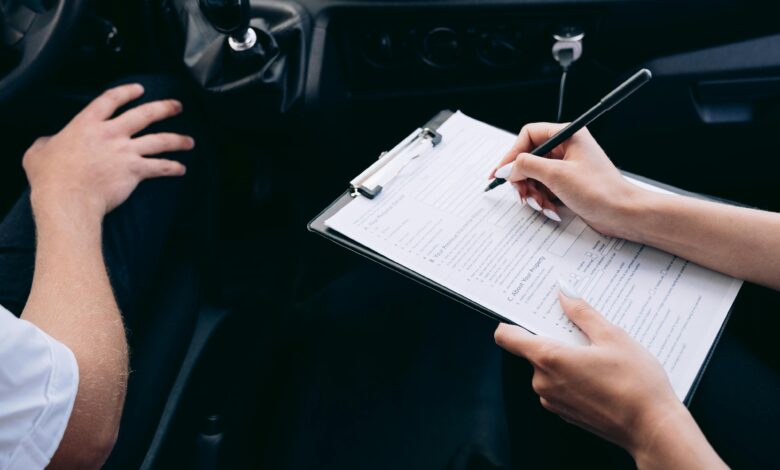How to File a Car Insurance Claim in the US: A Comprehensive Guide

Car accidents are an unfortunate reality of driving, and while no one plans for them, knowing how to handle the aftermath can save you time, money, and stress. One of the most critical steps after an accident is filing a car insurance claim. Whether it’s a minor fender bender or a major collision, understanding the process will ensure you’re prepared when the unexpected happens. In this guide, we’ll walk you through everything you need to know about filing a car insurance claim in the United States.
Step 1: Stay Calm and Assess the Situation
The moments immediately following a car accident can be overwhelming, but staying calm is essential. Before anything else:
- Check for injuries : Ensure that everyone involved—yourself, your passengers, and others—is safe. Call 911 if anyone requires medical attention.
- Move to safety : If possible, move your vehicle out of traffic to prevent further accidents. Turn on your hazard lights to alert other drivers.
- Avoid admitting fault : While it’s important to exchange information and cooperate with authorities, avoid apologizing or making statements that could imply responsibility.
Once the immediate situation is under control, it’s time to gather information and begin the claims process.
Step 2: Document the Accident
Thorough documentation is key to a smooth insurance claim. Here’s what you should do:
Take Photos
Use your smartphone to take clear pictures of:
- The damage to all vehicles involved
- License plates of all cars
- Road conditions, weather, and any visible skid marks
- Traffic signs or signals near the scene
Collect Witness Information
If there were witnesses, ask for their names, phone numbers, and addresses. Their accounts may prove valuable later.
Exchange Details with Other Drivers
Obtain the following from the other driver(s):
- Name, address, and contact number
- Driver’s license number
- Insurance company name and policy number
- Vehicle make, model, and license plate number
File a Police Report
Even for minor accidents, filing a police report is recommended. It provides an official record of the incident, which can strengthen your claim. Be honest and factual when speaking to officers.
Step 3: Notify Your Insurance Company
Once you’ve gathered all necessary information, it’s time to contact your insurance provider. Most companies have a 24/7 hotline for reporting claims. When calling, keep these tips in mind:
- Be Honest and Accurate : Provide a detailed account of the accident without exaggerating or omitting details.
- Have Documentation Ready : Refer to your notes, photos, and the police report during the conversation.
- Ask Questions : Clarify any uncertainties about deductibles, coverage limits, or next steps.
Some insurers also allow you to file claims online or via mobile apps, which can expedite the process.
Step 4: Understand Your Coverage
Before proceeding, familiarize yourself with your policy. Common types of coverage include:
- Liability Coverage : Pays for damages you cause to others (required in most states).
- Collision Coverage : Covers repairs to your vehicle regardless of who’s at fault.
- Comprehensive Coverage : Protects against non-collision incidents like theft, vandalism, or natural disasters.
- Personal Injury Protection (PIP) : Covers medical expenses for you and your passengers.
- Uninsured/Underinsured Motorist Coverage : Helps if the other driver lacks sufficient insurance.
Knowing your coverage ensures you understand what expenses your insurer will cover.
Step 5: Work with the Claims Adjuster
After filing your claim, your insurance company will assign a claims adjuster to investigate. This person plays a crucial role in determining the payout amount. To work effectively with them:
- Provide Evidence : Share all relevant documents, including repair estimates, medical bills, and photos.
- Get Multiple Repair Quotes : If your car needs repairs, obtain quotes from different shops to compare costs.
- Stay Organized : Keep copies of all correspondence and receipts related to the claim.
Remember, the adjuster works for the insurance company—not you. Be polite but assertive in advocating for fair compensation.
Step 6: Review Settlement Offers
Once the investigation is complete, the insurer will present a settlement offer. Carefully review it to ensure it aligns with your expectations. Consider the following:
- Repair Costs : Does the offer cover the full cost of repairs? Are parts being replaced with original equipment manufacturer (OEM) components?
- Total Loss : If your car is deemed a total loss, confirm that the payout reflects its actual cash value (ACV).
- Additional Expenses : Were rental car fees, towing charges, or medical bills included?
If you believe the offer is inadequate, negotiate or seek legal advice. Many policies include arbitration clauses for disputes.
Step 7: Follow Up and Close the Claim
After accepting the settlement, finalize the claim by signing any required paperwork. Ensure all payments are received before closing the case. Keep records of the entire process in case issues arise later.
Tips for a Smooth Claims Process
To make filing a car insurance claim as hassle-free as possible, consider these additional tips:
- Act Quickly : Report the accident promptly to avoid delays or complications.
- Review Your Policy Regularly : Understanding your coverage beforehand prevents surprises during claims.
- Maintain Good Communication : Respond promptly to requests from your insurer or adjuster.
- Keep Receipts : Save all receipts for out-of-pocket expenses related to the accident.
- Consider Legal Help : For complex cases involving significant injuries or disputed liability, consult an attorney specializing in auto accidents.
Common Mistakes to Avoid
Filing a car insurance claim isn’t always straightforward, and mistakes can lead to reduced payouts or denied claims. Watch out for these pitfalls:
- Delaying the Claim : Waiting too long to report the accident may violate your policy terms.
- Overlooking Minor Damages : Even small dents or scratches should be documented, as they might worsen over time. aSigning Documents Blindly : Never sign agreements or releases without fully understanding their implications.
- Accepting the First Offer Too Quickly : Take time to evaluate whether the settlement adequately compensates you.




